Pop Art
Posted by Graphicdome on 29th Jan 2023
Pop art is a form of art that emerged in the 1950s and gained popularity in the 1960s. It is characterized by the use of recognizable imagery from popular culture, such as advertising, news, and comic books. Pop artists sought to bring art back into the everyday world and to make it more accessible to a wider audience. They often employed techniques of commercial art, such as silkscreen printing and airbrushing, and their work is known for its bold, graphic style and bright, iconic images.
 Credits: The Colllector - works by Andy Warhol
Credits: The Colllector - works by Andy Warhol
Pop art is often seen as a reaction to the dominant abstract expressionist movement of the time, which emphasized the individual artist's emotions and inner experiences. Pop artists, on the other hand, sought to challenge traditional notions of high art by using imagery from the mass media and popular culture.
Some of the most famous pop artists include Andy Warhol, who is perhaps best known for his Campbell's Soup Cans and Marilyn Monroe screen prints; Roy Lichtenstein, known for his comic book-inspired paintings; and Claes Oldenburg, known for his sculptures of everyday objects such as hamburgers and typewriters.
Pop art has had a significant influence on contemporary art and design and its techniques and imagery can still be seen in the work of many contemporary artists. Additionally, Pop Art has also been a great influence in Graphic Design, Advertising, and Product Design.
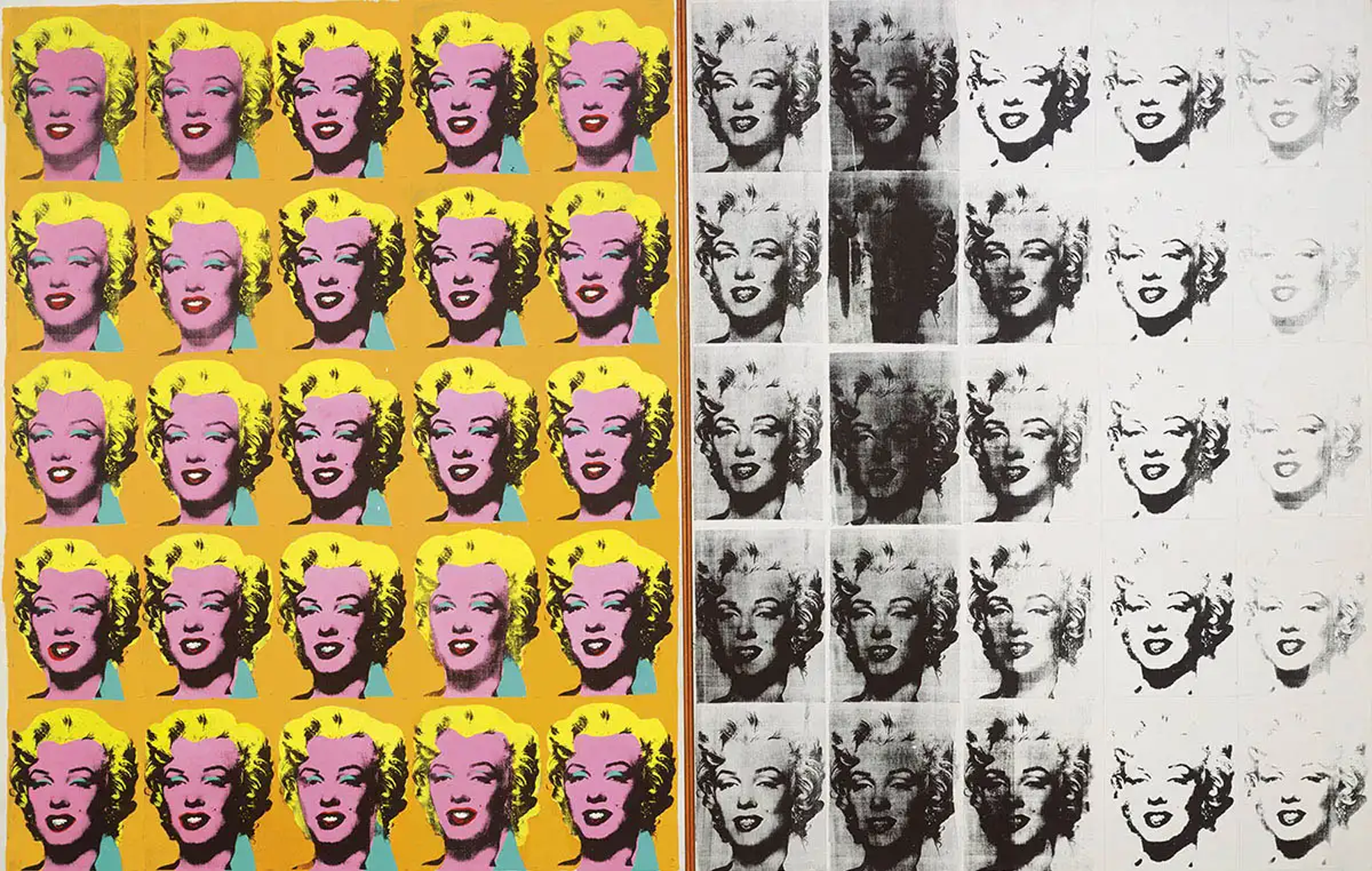 Credits: The Colllector - works by Andy Warhol
Credits: The Colllector - works by Andy Warhol
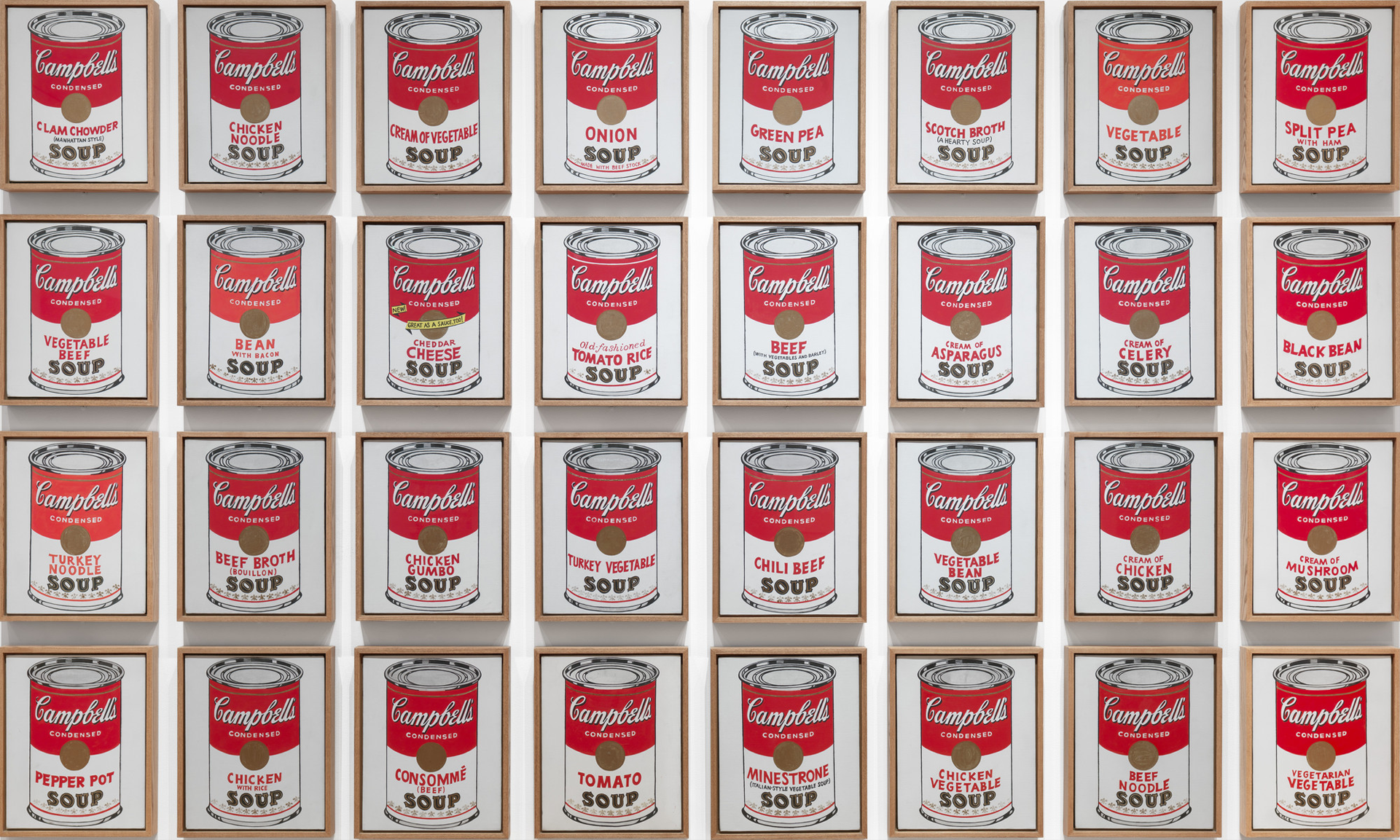 Credits: Niood - works by Andy Warhol
Credits: Niood - works by Andy Warhol
Pop art was initially met with mixed reactions from critics. Some saw it as a welcome departure from the dominant abstract expressionist movement and a refreshing return to figurative art. Others criticized it for its commercialism and its use of banal, everyday imagery.
 Credits: Niood - works by Andy Warhol
Credits: Niood - works by Andy Warhol
 Credits: The Collector - works by Roy Lichtenstein
Credits: The Collector - works by Roy Lichtenstein
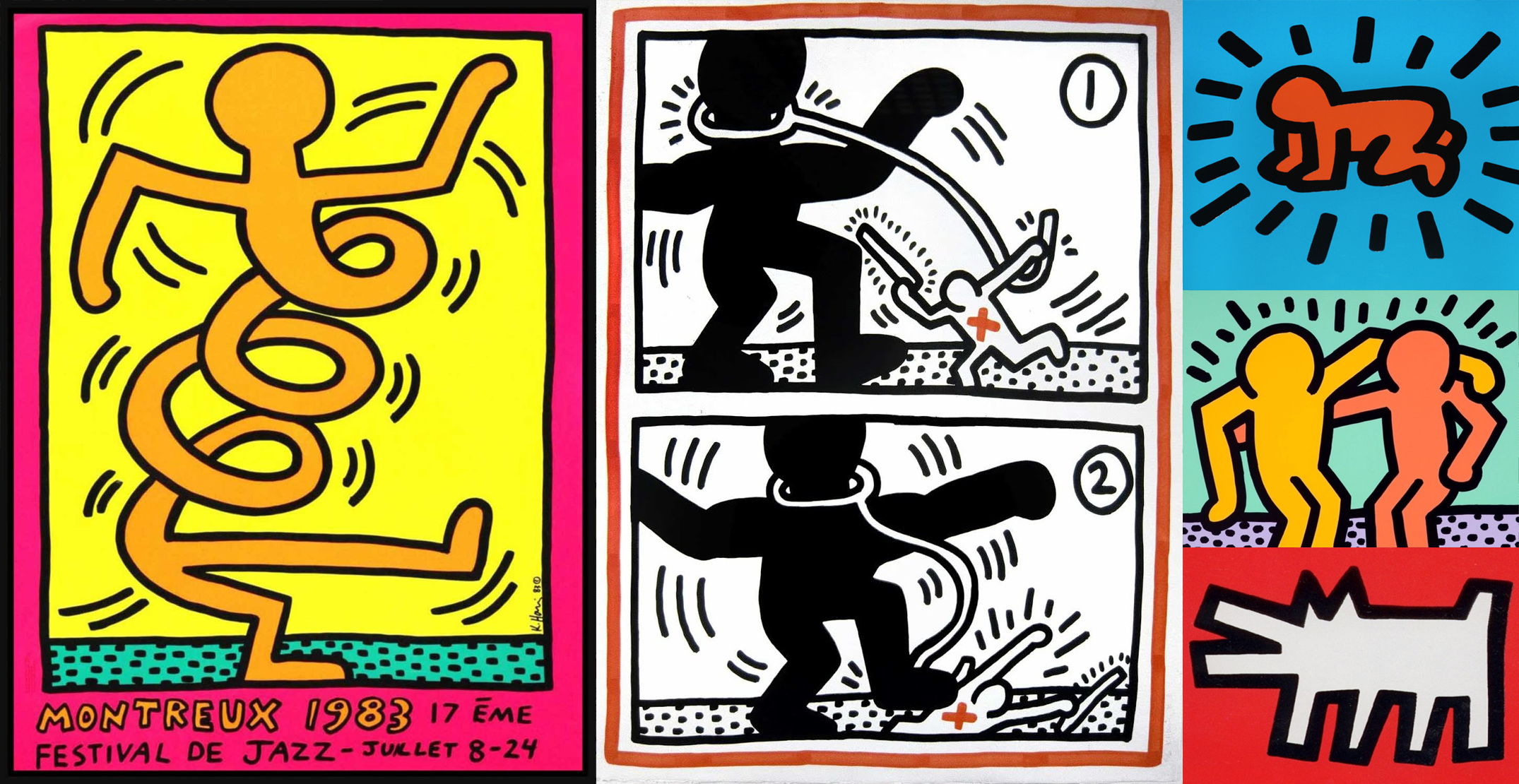 Credits: Niood - works by Keith Haring
Credits: Niood - works by Keith Haring
Critics who supported Pop art saw it as a way to bring art back to the people and to challenge traditional notions of high art. They appreciated the use of recognizable imagery from popular culture and the way it brought art into the everyday world. They also admired the technical skill and the graphic style of the work.
Critics who were not supportive of Pop art, on the other hand, saw it as a shallow, superficial movement that was more interested in commercial success than in creating meaningful art. They criticized the use of commercial techniques such as silkscreen printing and airbrushing, and the lack of emotional depth in the work. They also saw it as a form of cultural imperialism that exploited and degraded popular culture.
 Credits: Niood - works by Yayoi Kusama
Credits: Niood - works by Yayoi Kusama
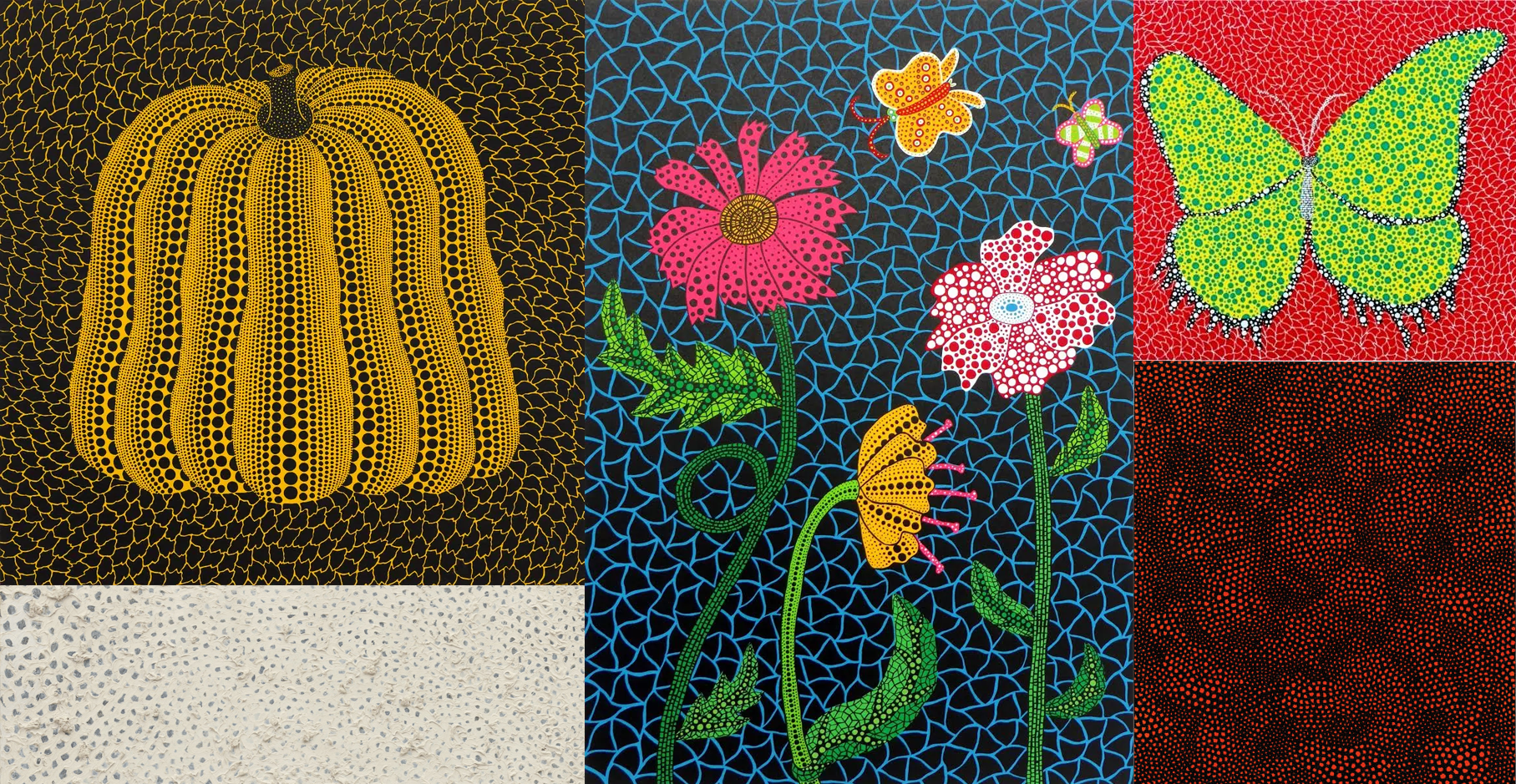 Credits: Niood - works by Yayoi Kusama
Credits: Niood - works by Yayoi Kusama
Despite the mixed reactions from critics, Pop art quickly gained popularity among the general public, and many Pop artists became household names. Pop art has since become an important movement in art history and has had a significant influence on contemporary art and culture.
Pop Art key features:
- Recognizable imagery
- Bold, graphic style
- Commercial techniques
- Criticism of consumer culture
- Pop art is seen as a reaction to the dominant abstract expressionist movement of the time and the return to figurative art
- Use of everyday objects
- Celebrity culture
- All these features contribute to make Pop art an important movement that has changed the way people think about art, and has had a significant influence on contemporary art and culture.
Pop Art in current digital era
Pop art has had a significant influence on contemporary art and culture, and it continues to be relevant in the digital era. With the advent of digital technology, Pop art has adapted to new mediums and forms, and its themes and techniques continue to be explored in new and innovative ways.
One way that Pop art has adapted to the digital era is through the use of digital tools and platforms for creating and sharing art. For example, artists today can use graphic design software and social media platforms to create and distribute their work, making it more accessible to a wider audience. This has also opened up new opportunities for collaboration and interaction between artists and audiences.
Additionally, the themes of consumer culture and mass media that were central to the original Pop art movement remain relevant in the digital era. The rise of social media and the internet has only amplified the power of the mass media and consumer culture, and Pop art continues to be a relevant form of commentary on these issues.
Finally, Pop art has also influenced the use of popular culture imagery in contemporary art, design, and advertising. The bold, graphic style and bright, iconic images of Pop art can still be seen in the work of many contemporary artists, as well as in advertising, product design, and other forms of visual communication.
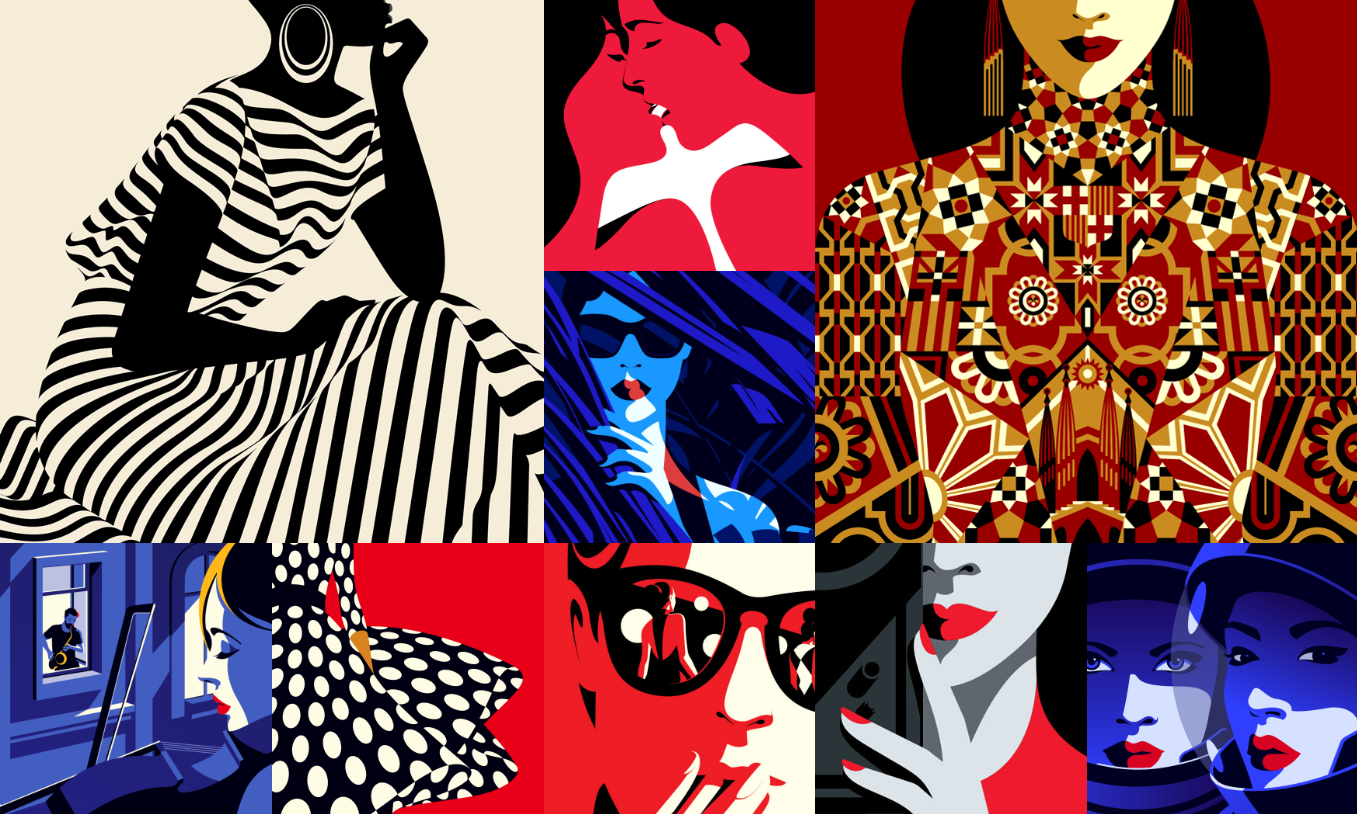 Credits: Malika Favre
Credits: Malika Favre
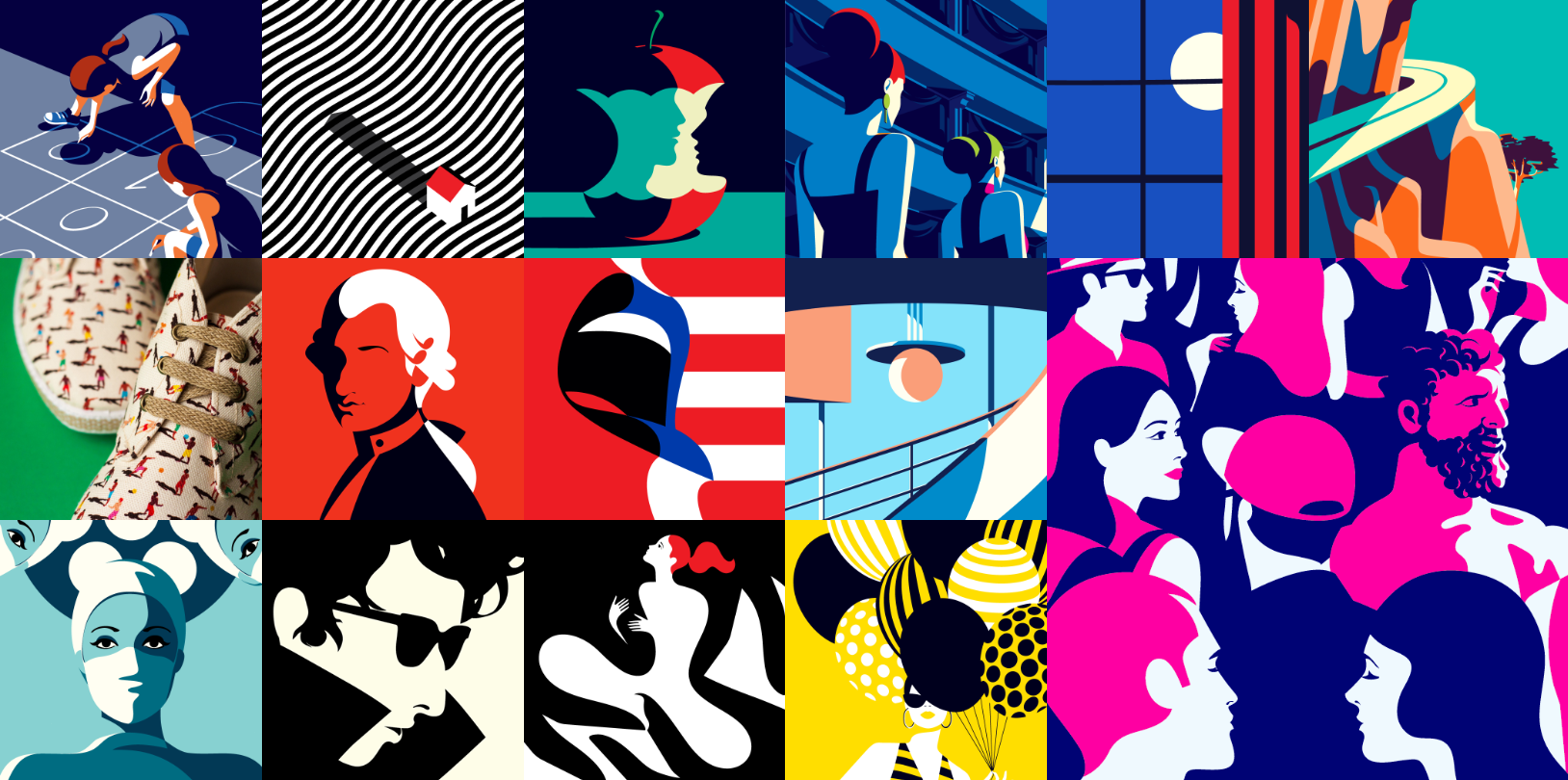 Credits: Malika Favre
Credits: Malika Favre
Overall, Pop art continues to be a relevant and influential movement in the digital era, adapting to new mediums and forms and continuing to explore its central themes in new and innovative ways.
Pop Art in Graphic Design
Pop art has had a significant impact on graphic design, particularly in its use of recognizable imagery, bold graphics, and bright colors.
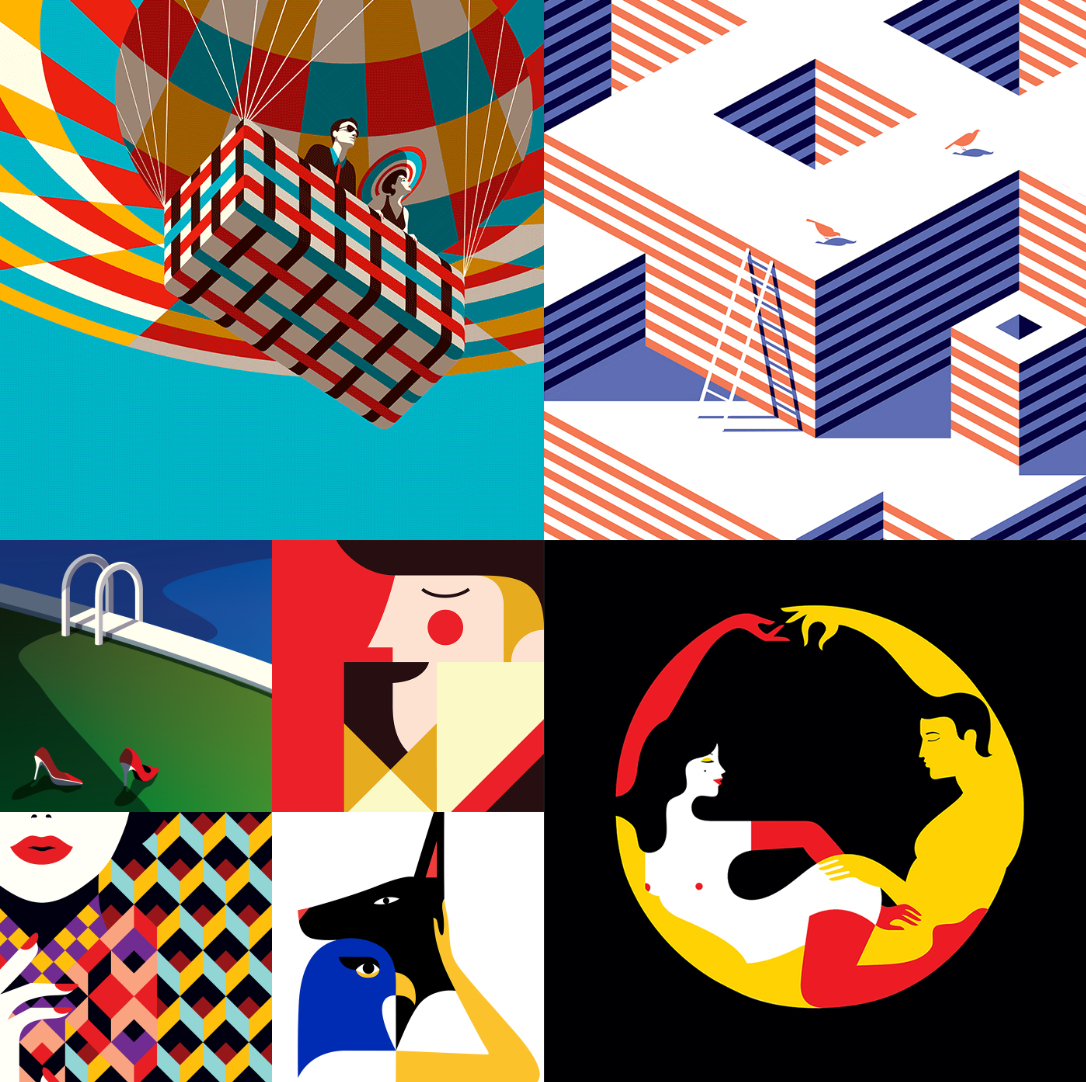 Credits: Malika Favre
Credits: Malika Favre
In graphic design, Pop art is often used to create eye-catching, attention-grabbing designs that are intended to stand out and be easily recognizable. The style and techniques of Pop art, such as the use of bold lines and simple forms, have been adapted for use in graphic design to create visually appealing designs that communicate a message in a clear and concise way.
Pop art's influence can also be seen in the use of popular culture imagery in graphic design. This can range from the use of comic book-style graphics to the incorporation of popular logos and branding into designs.
Another way that Pop art has influenced graphic design is through the use of commercial techniques, such as silkscreen printing and airbrushing, which have become standard techniques in graphic design. This has allowed designers to mass produce designs and make them more accessible to a wider audience.
Overall, Pop art has had a lasting impact on graphic design, influencing the way that designers approach their work and creating new opportunities for visual communication and expression.


